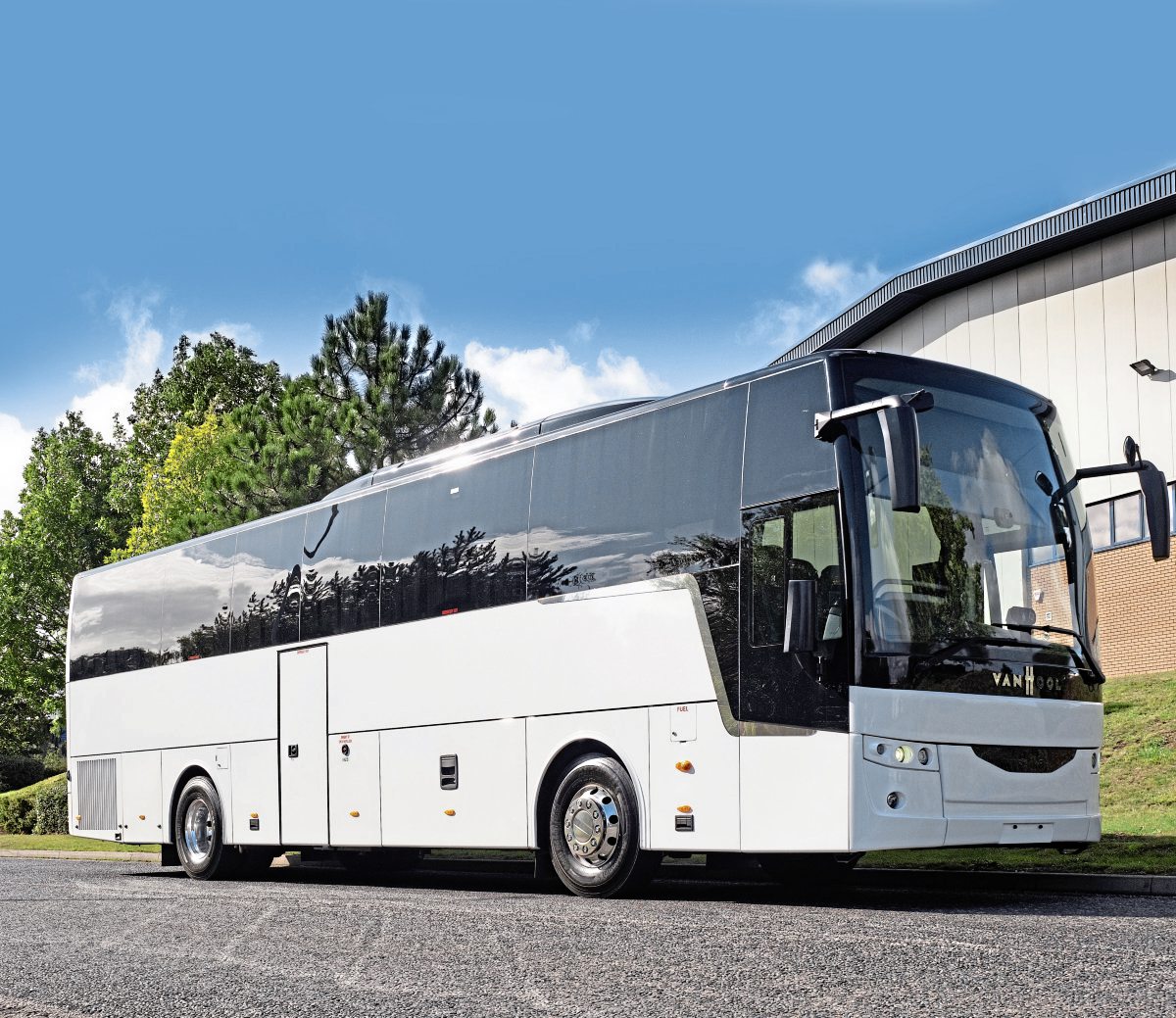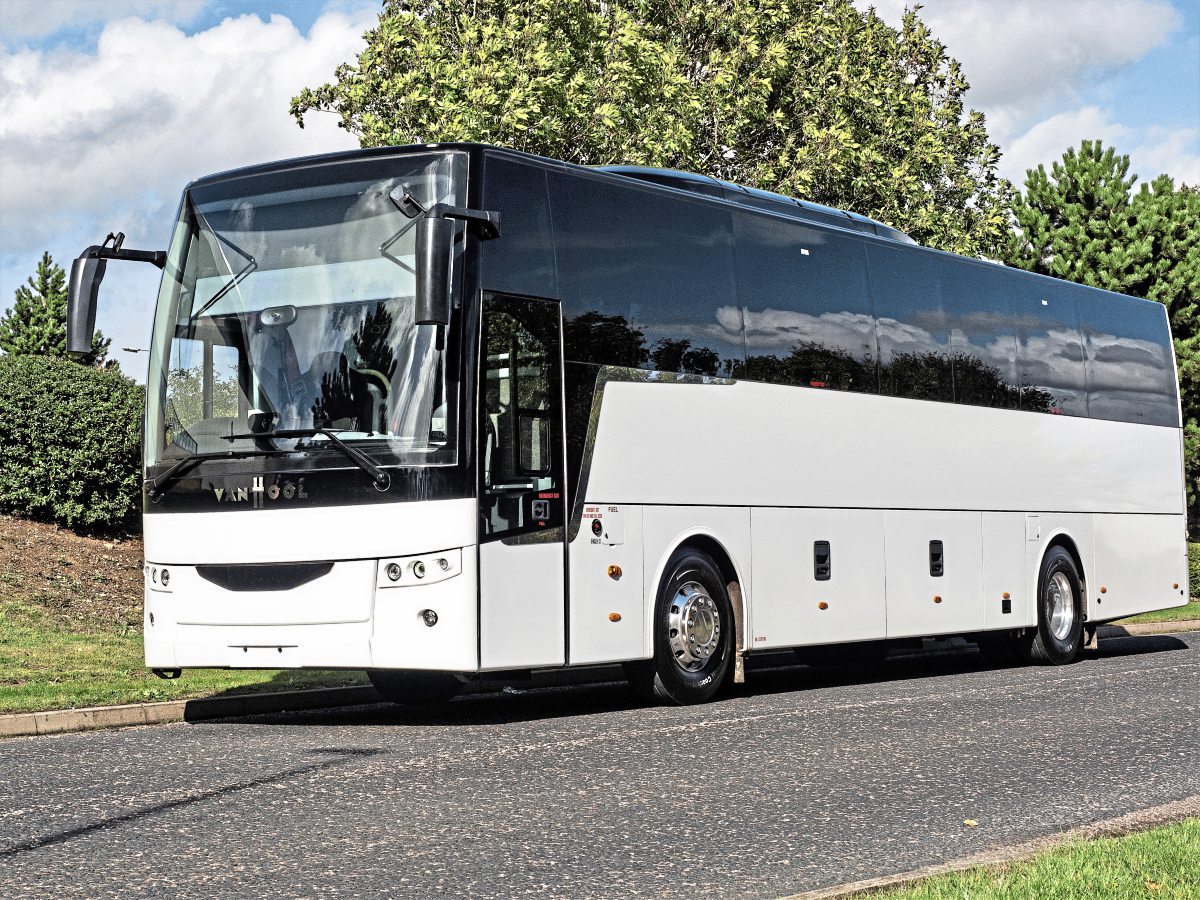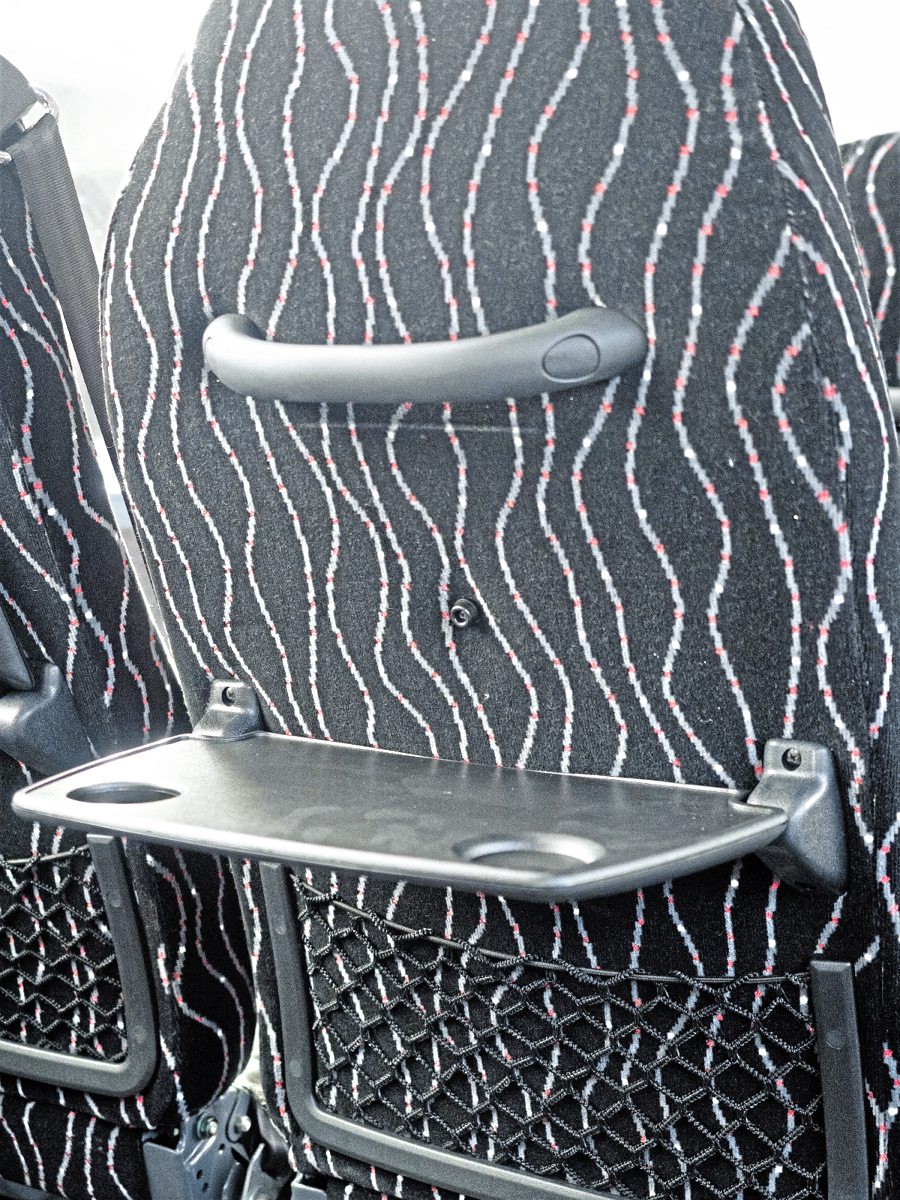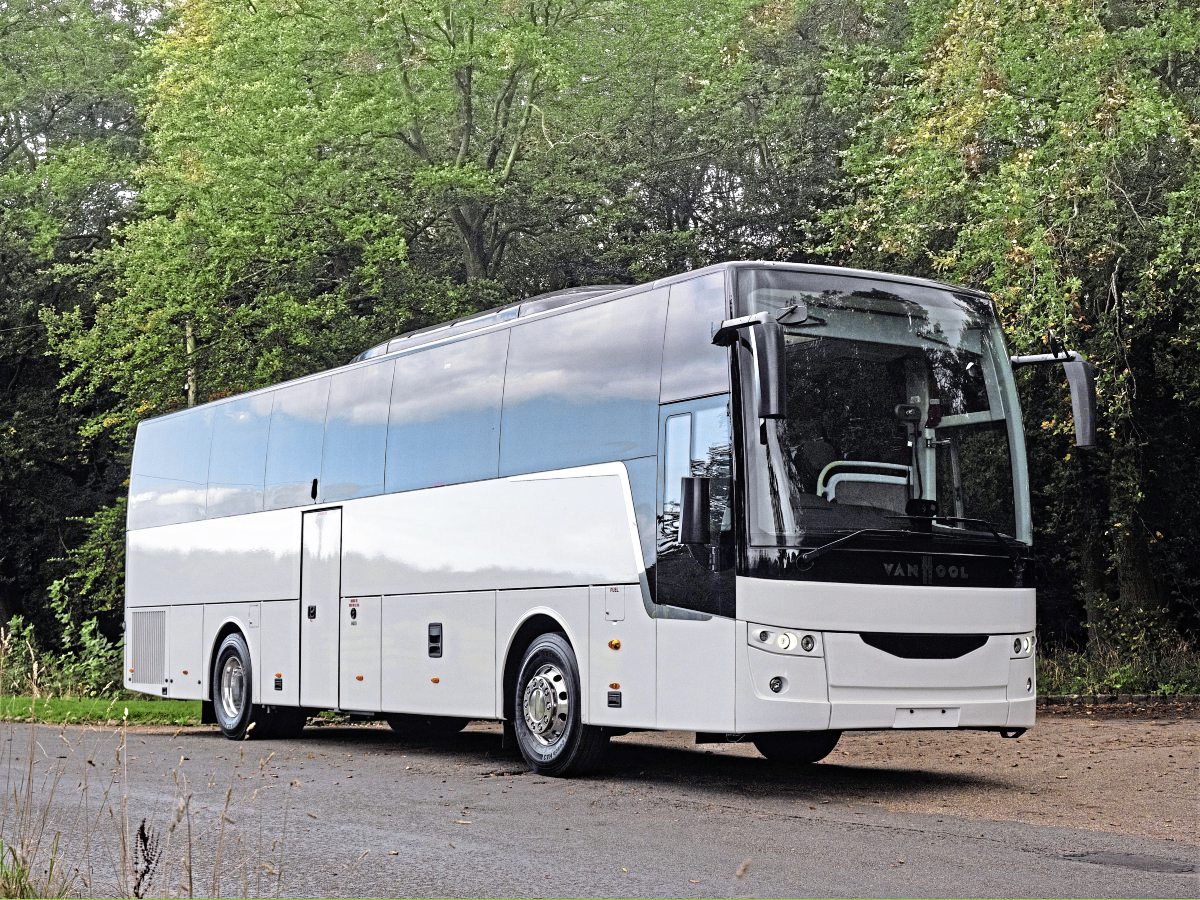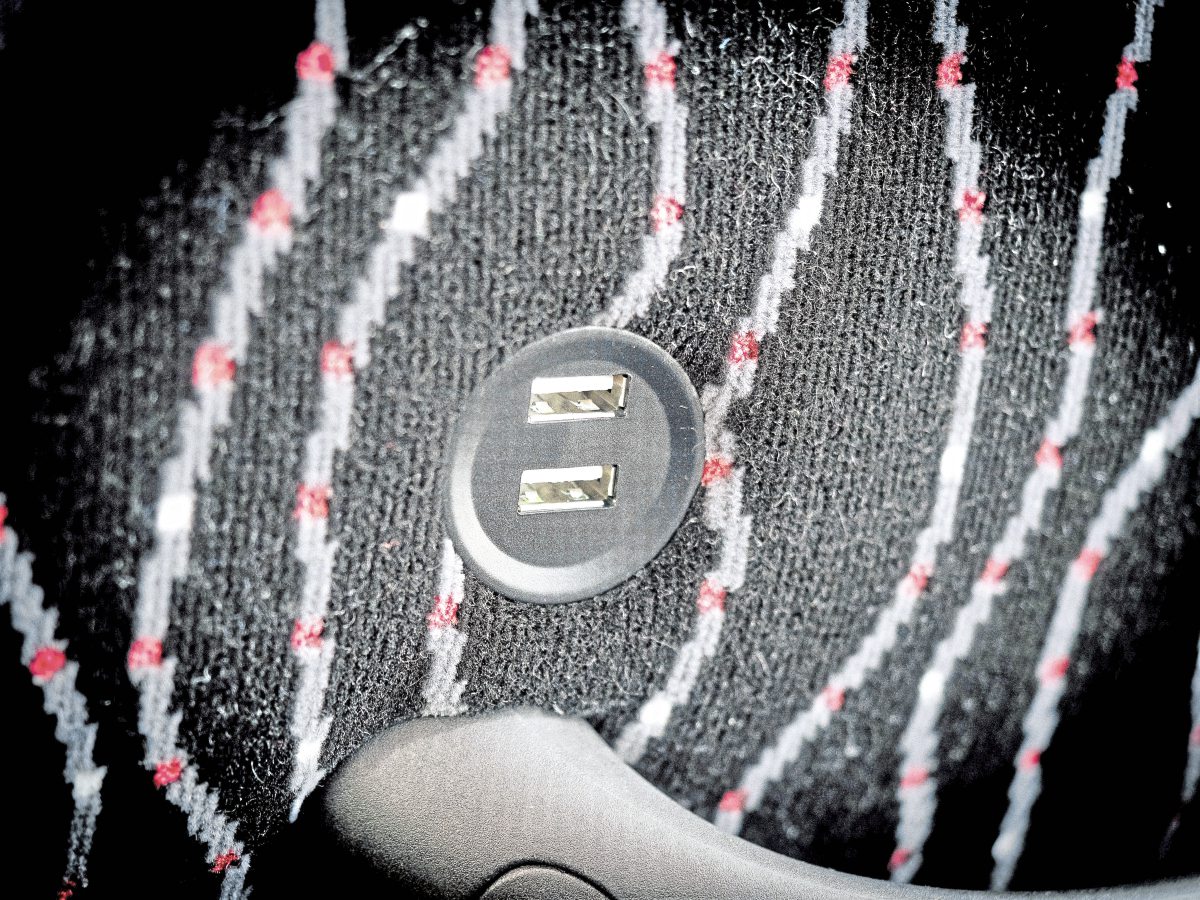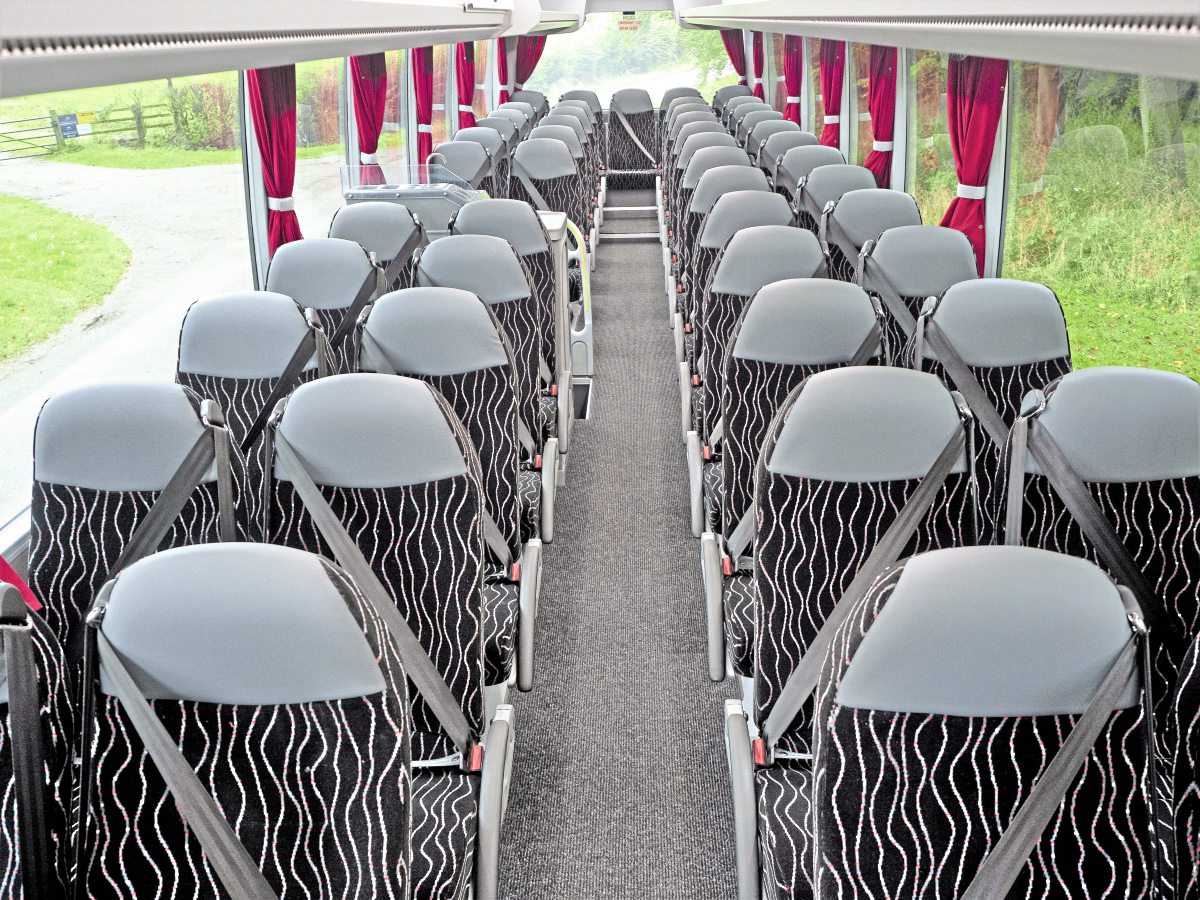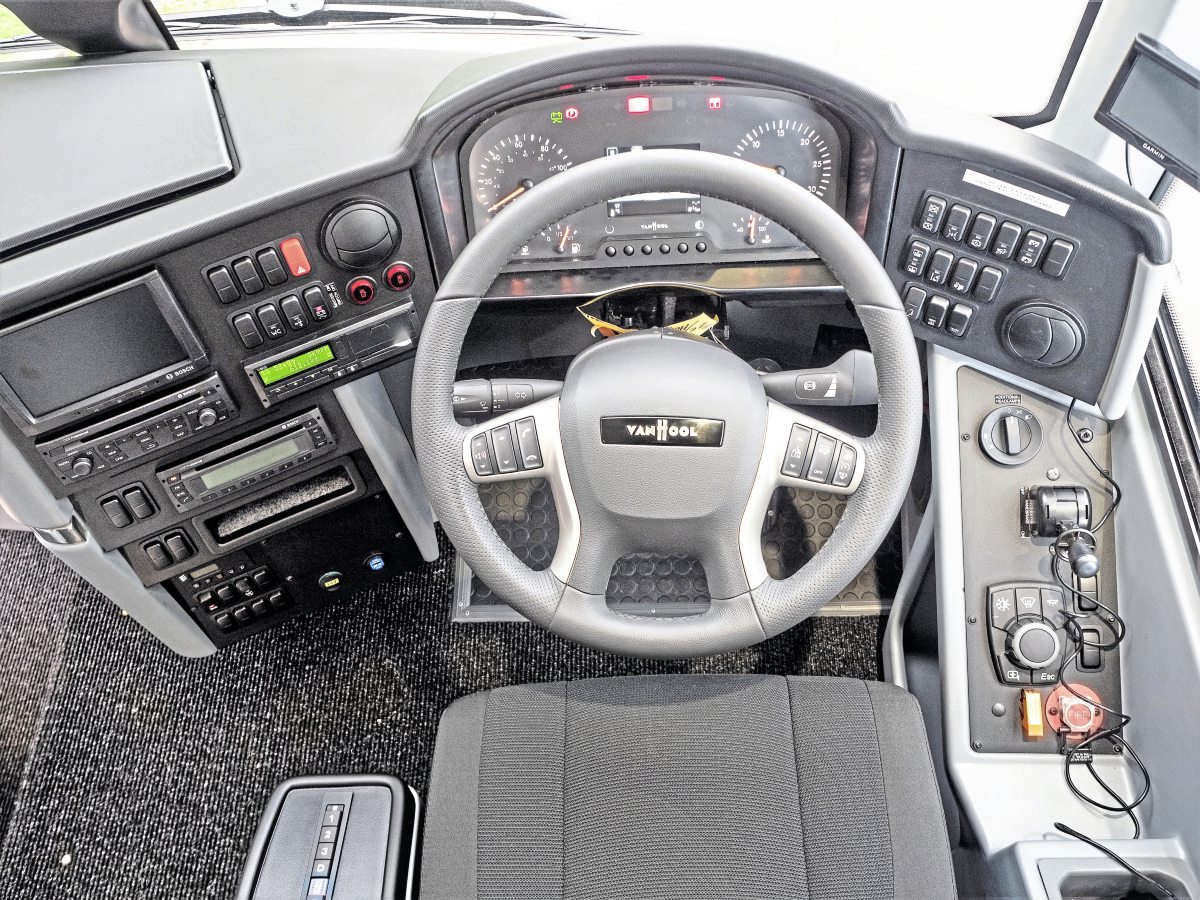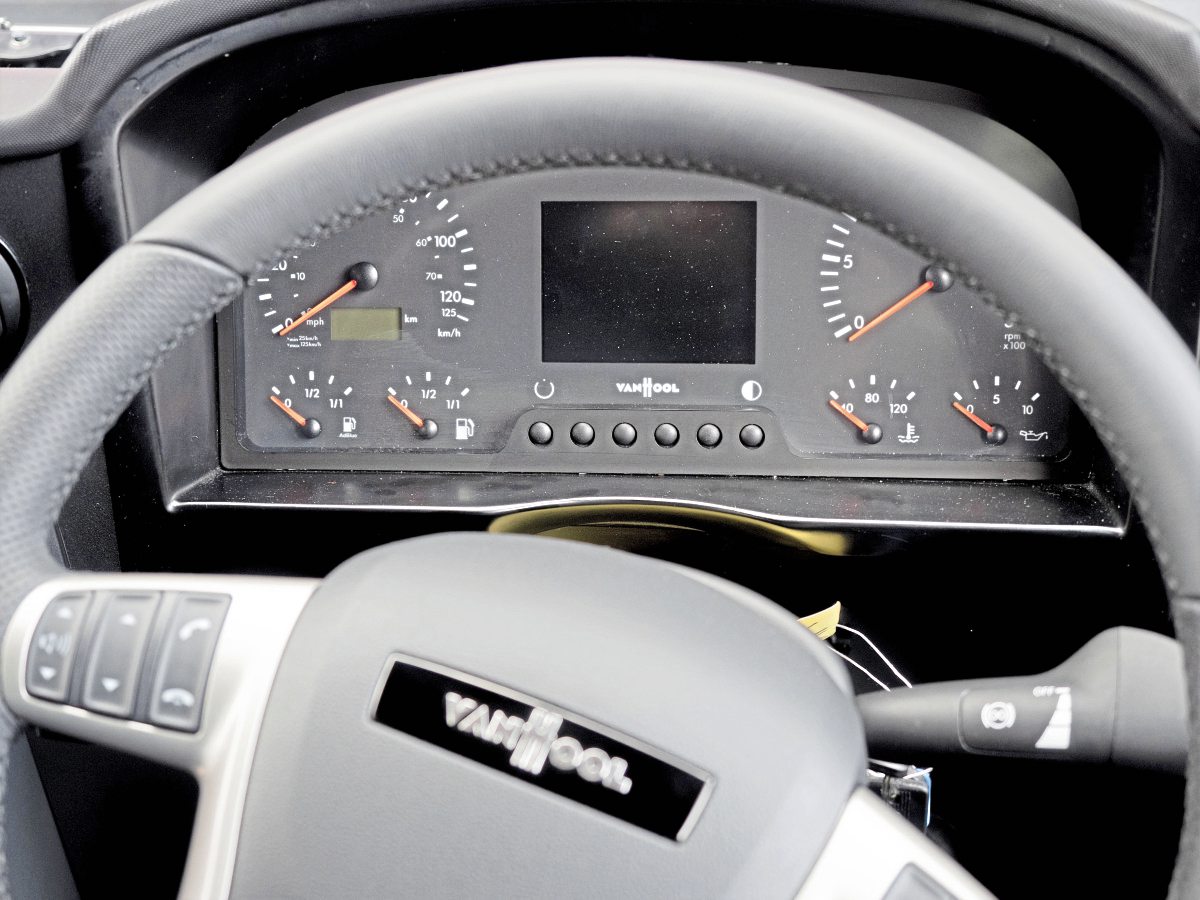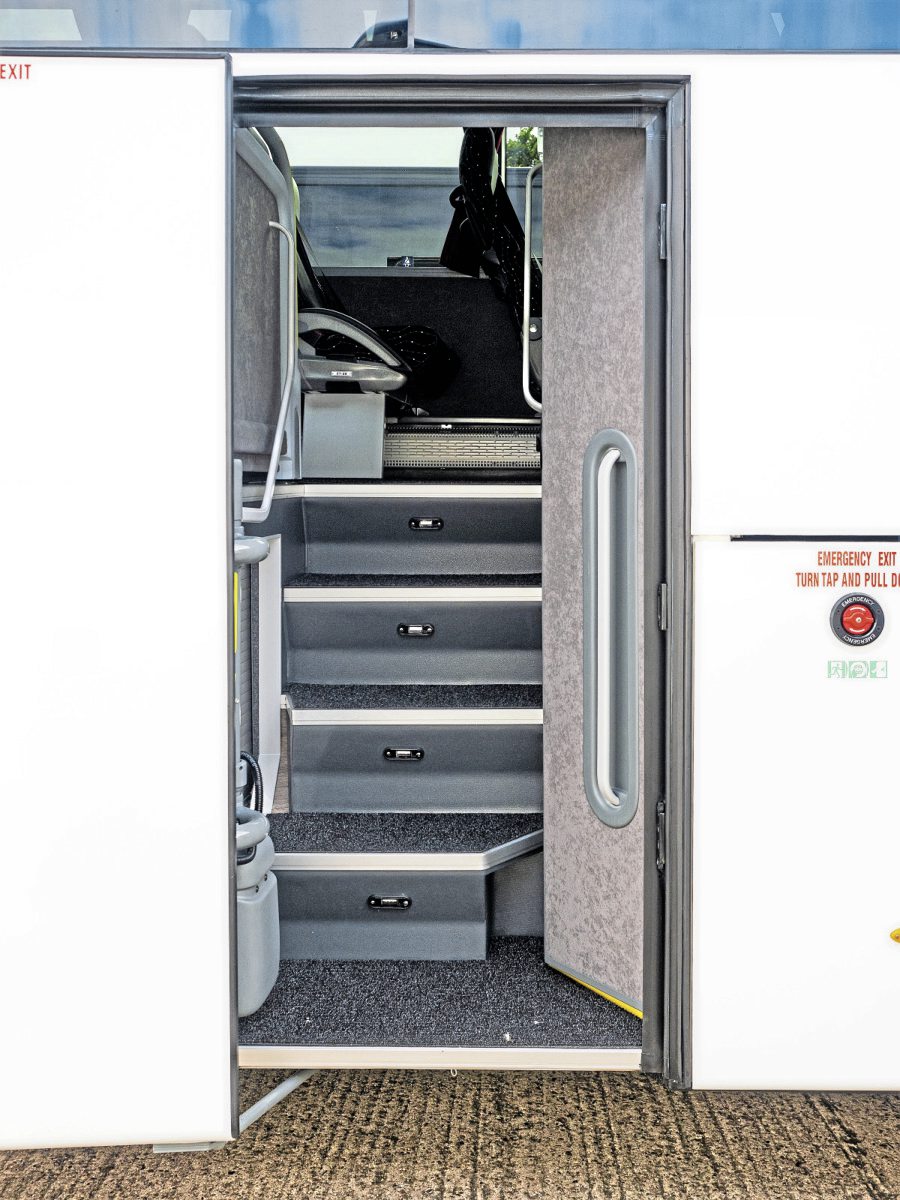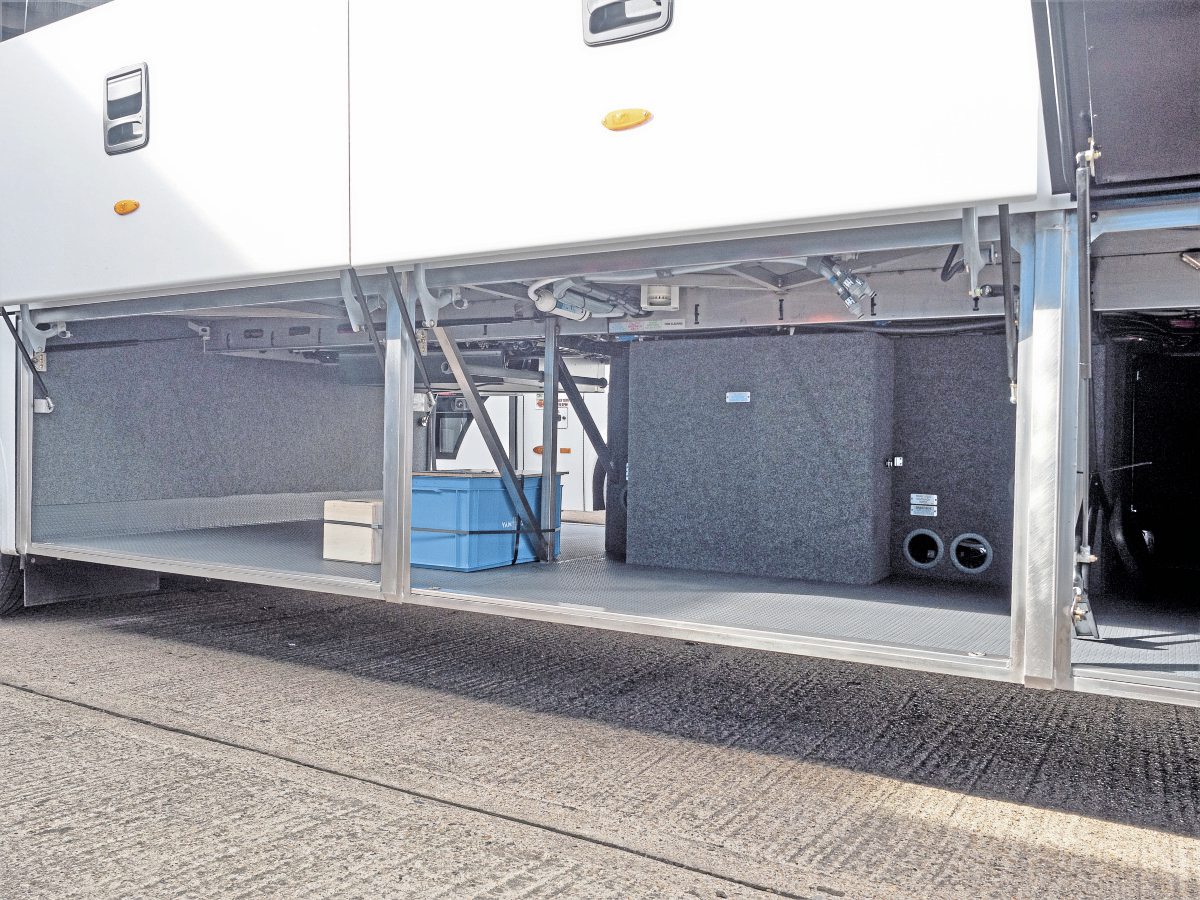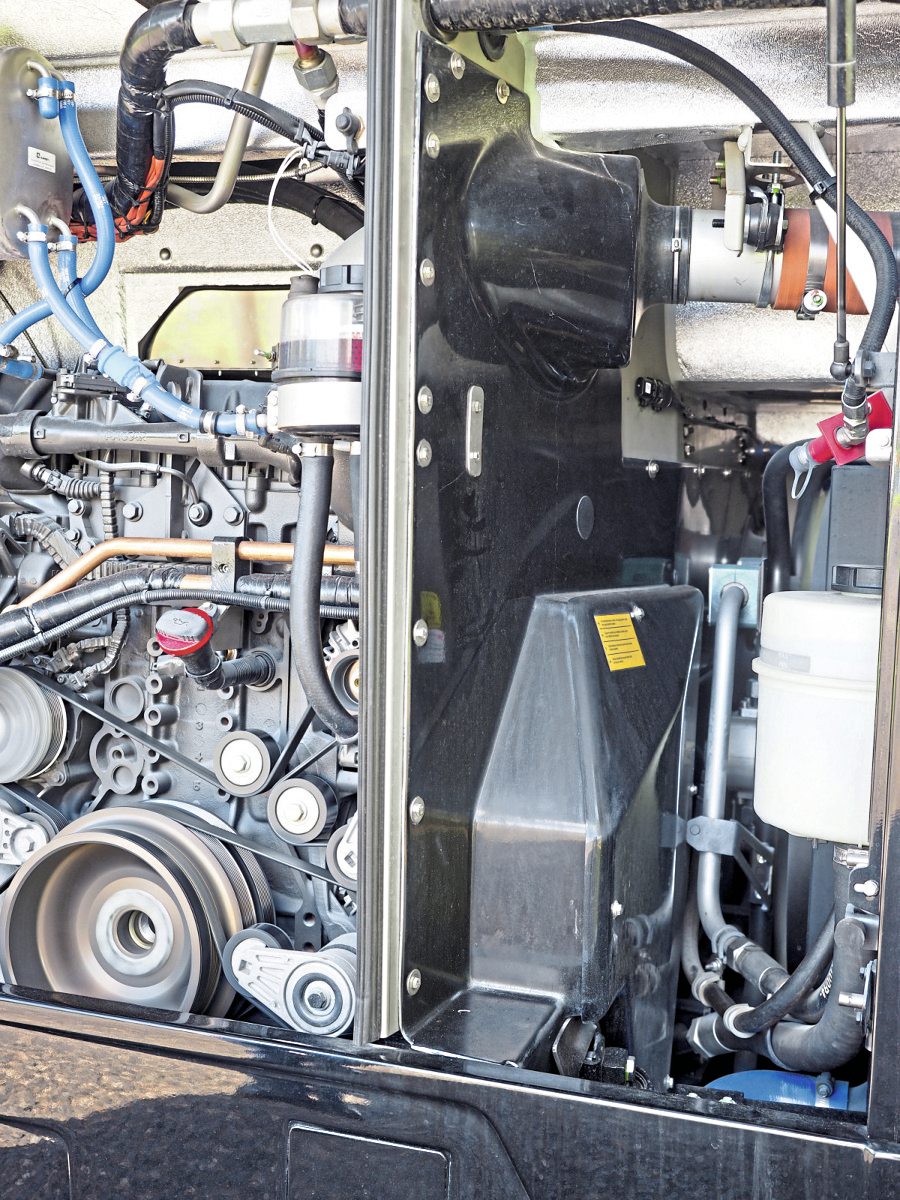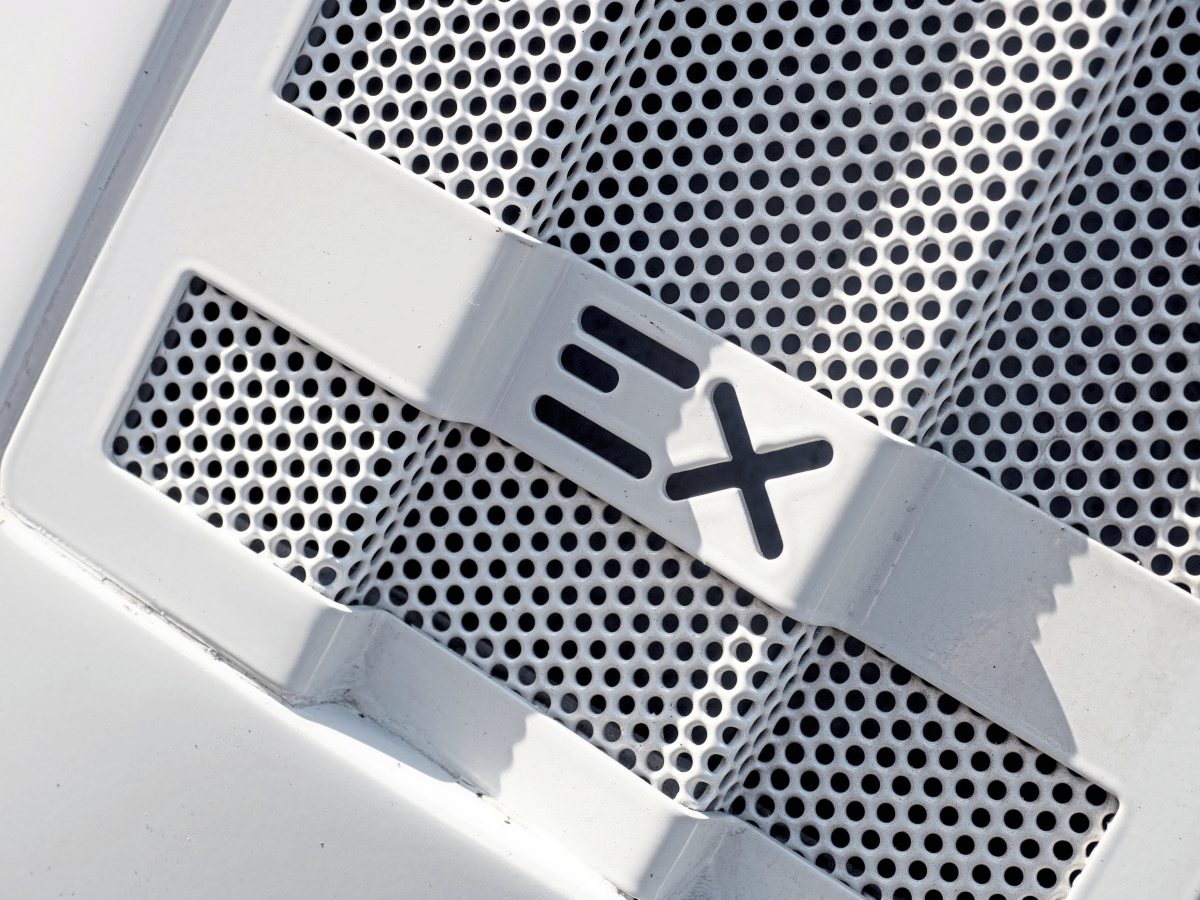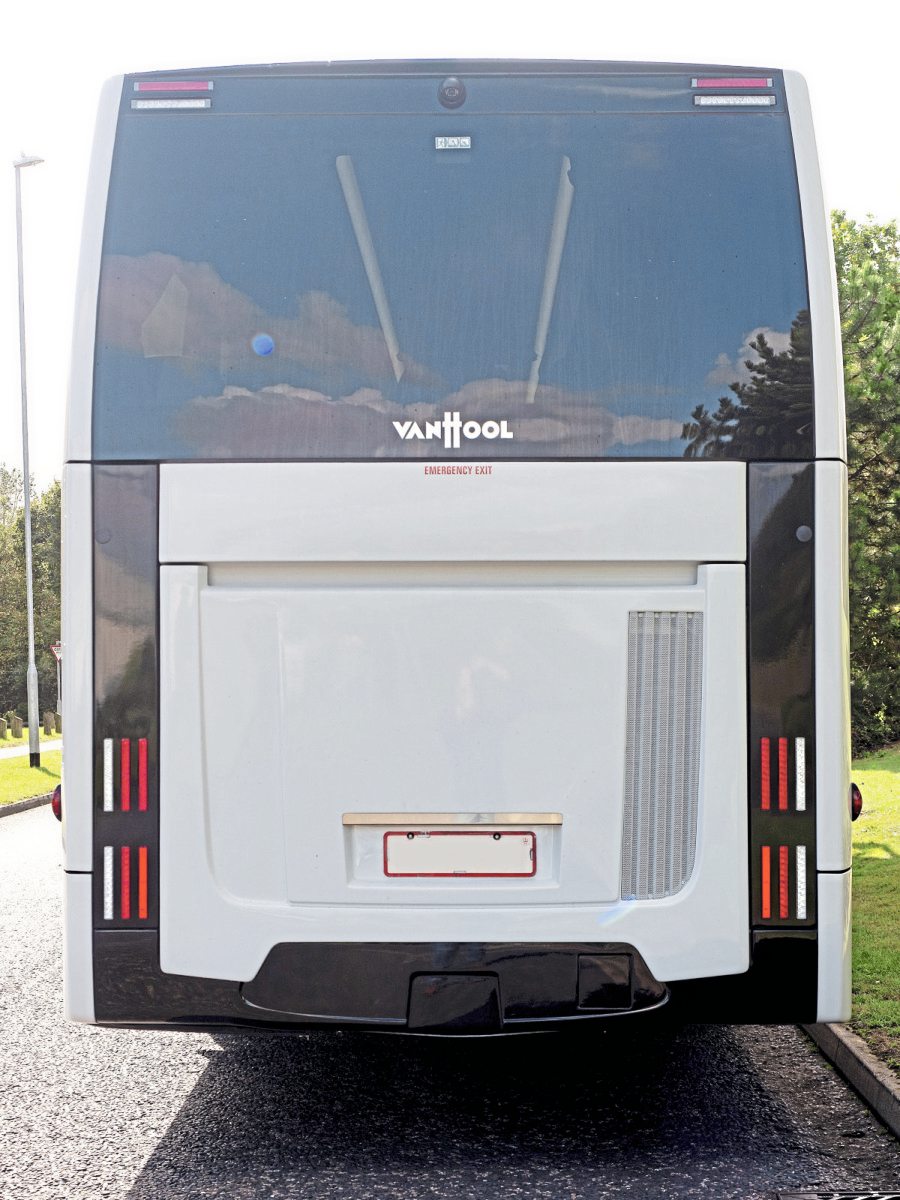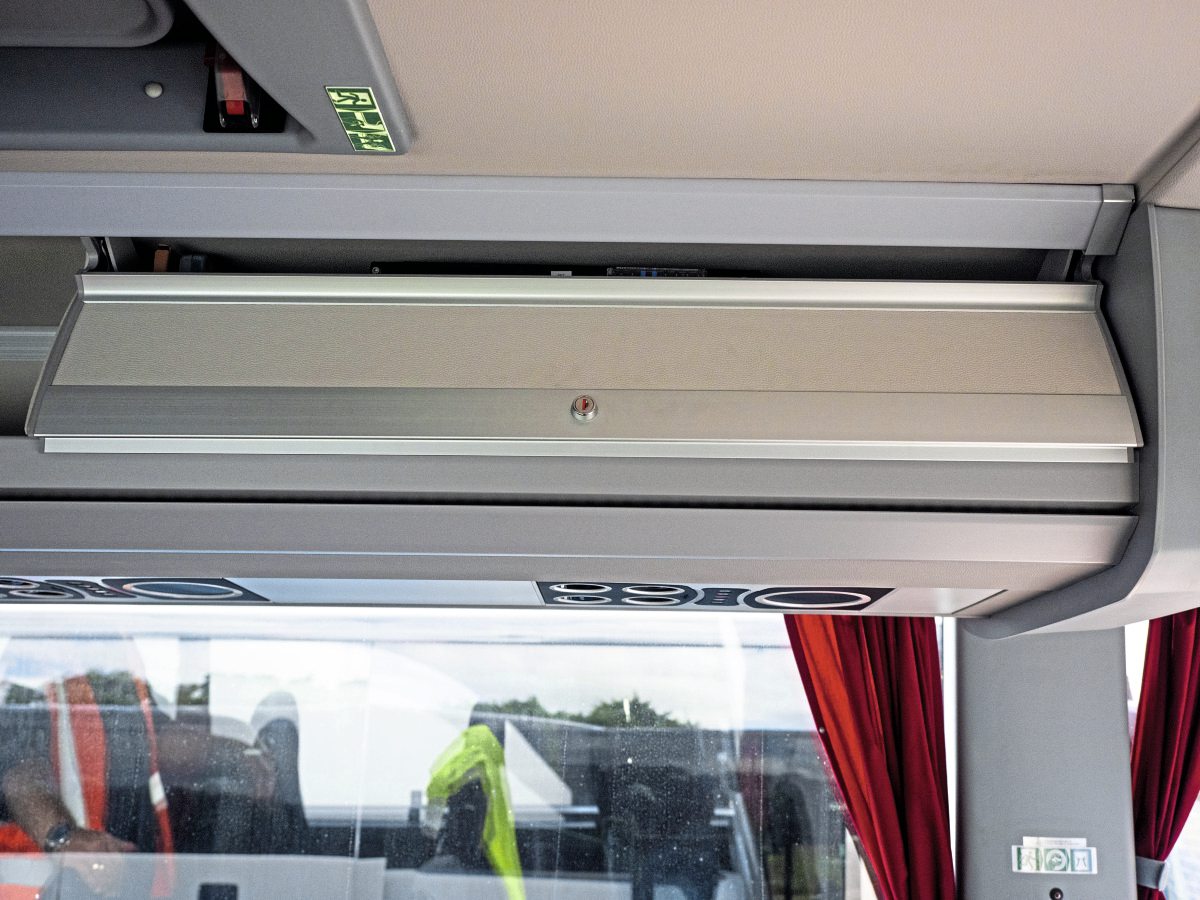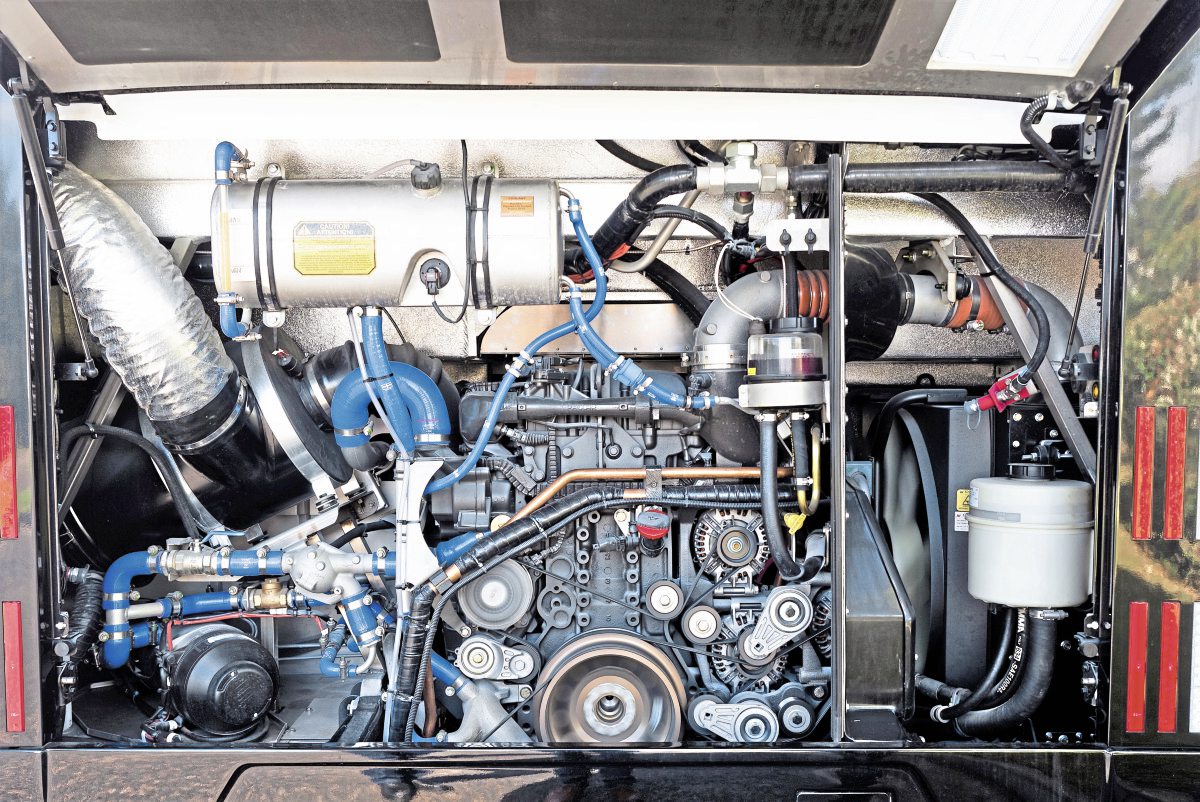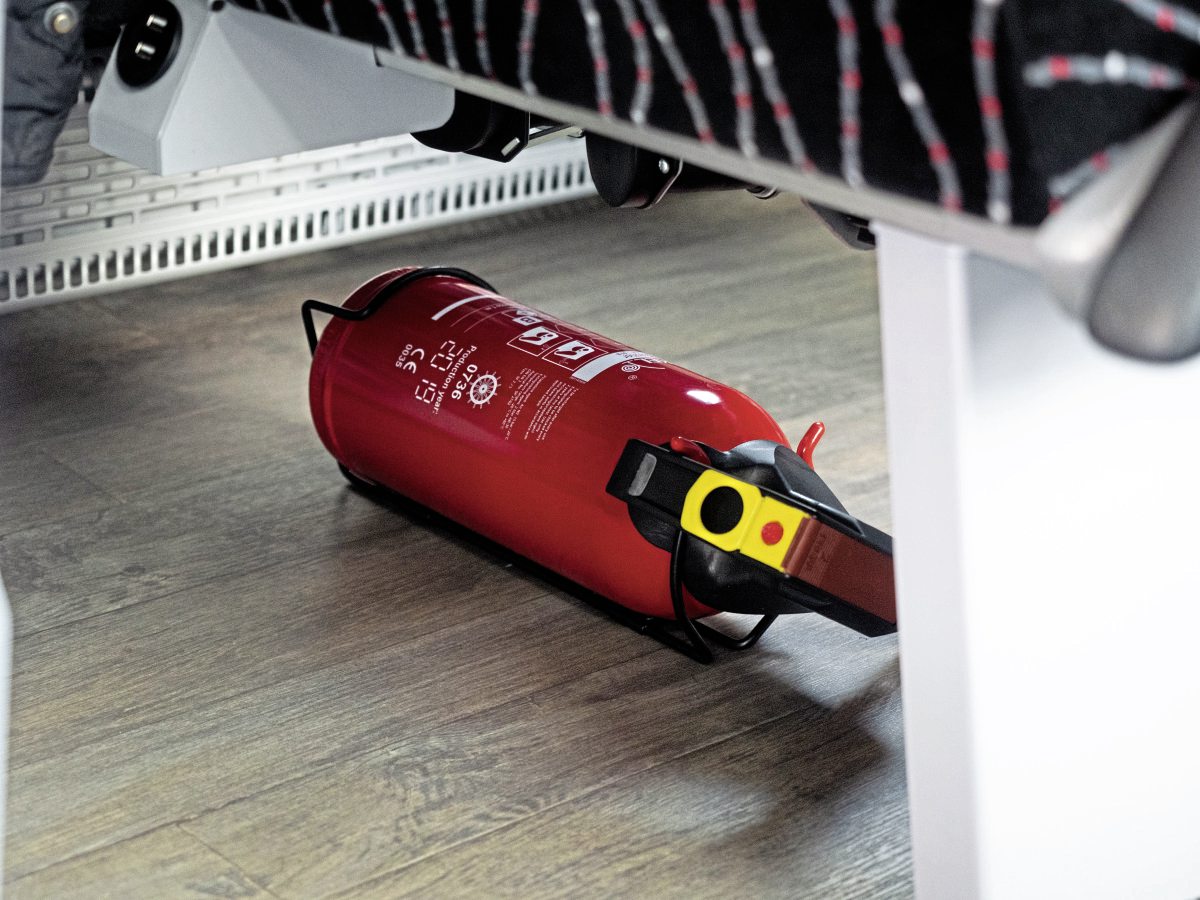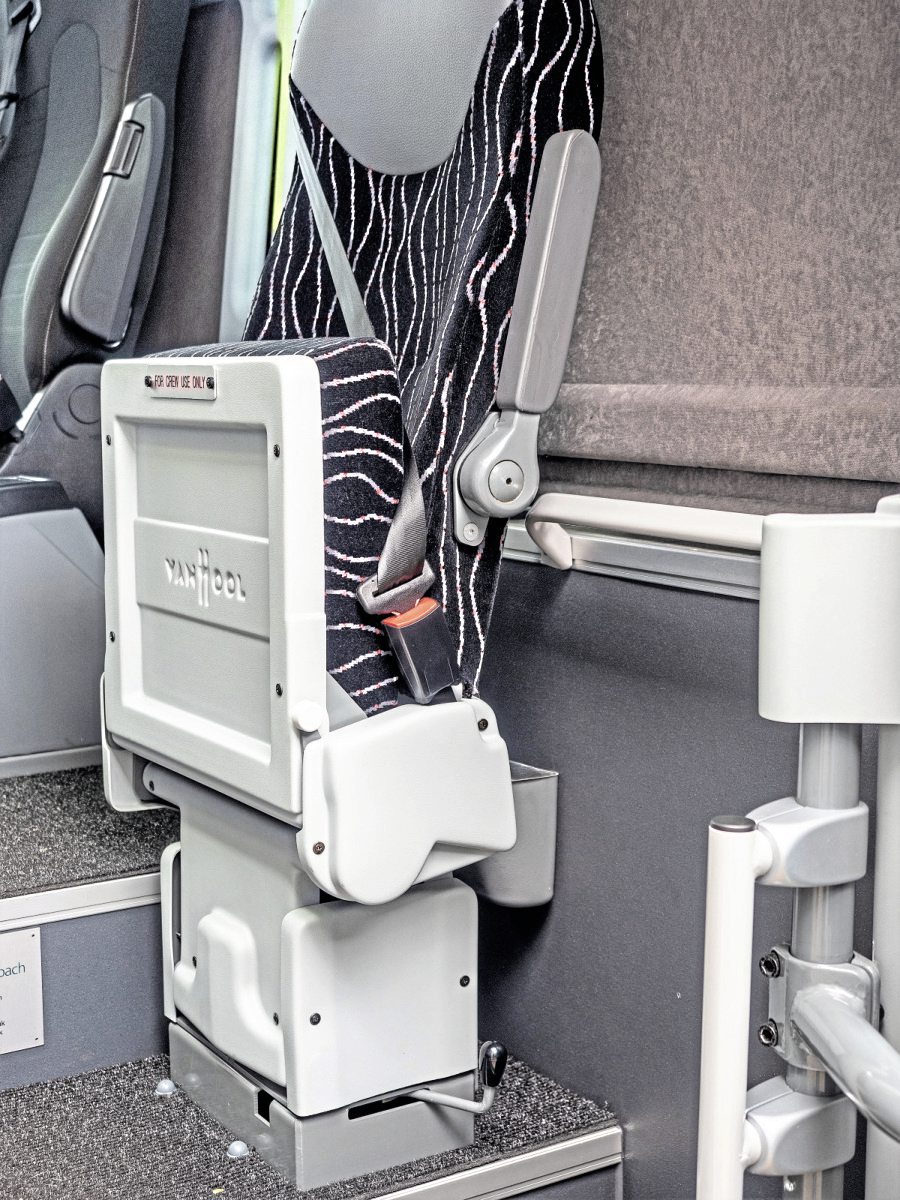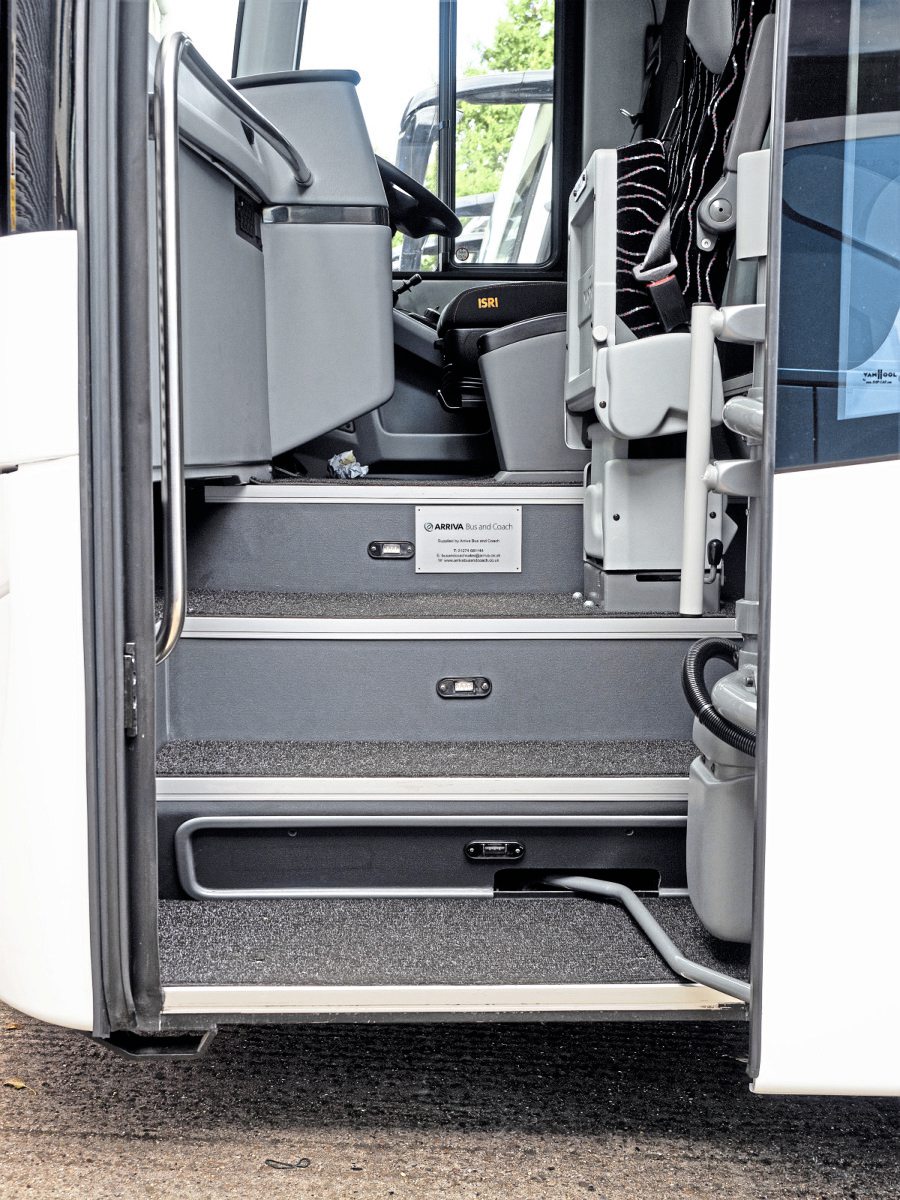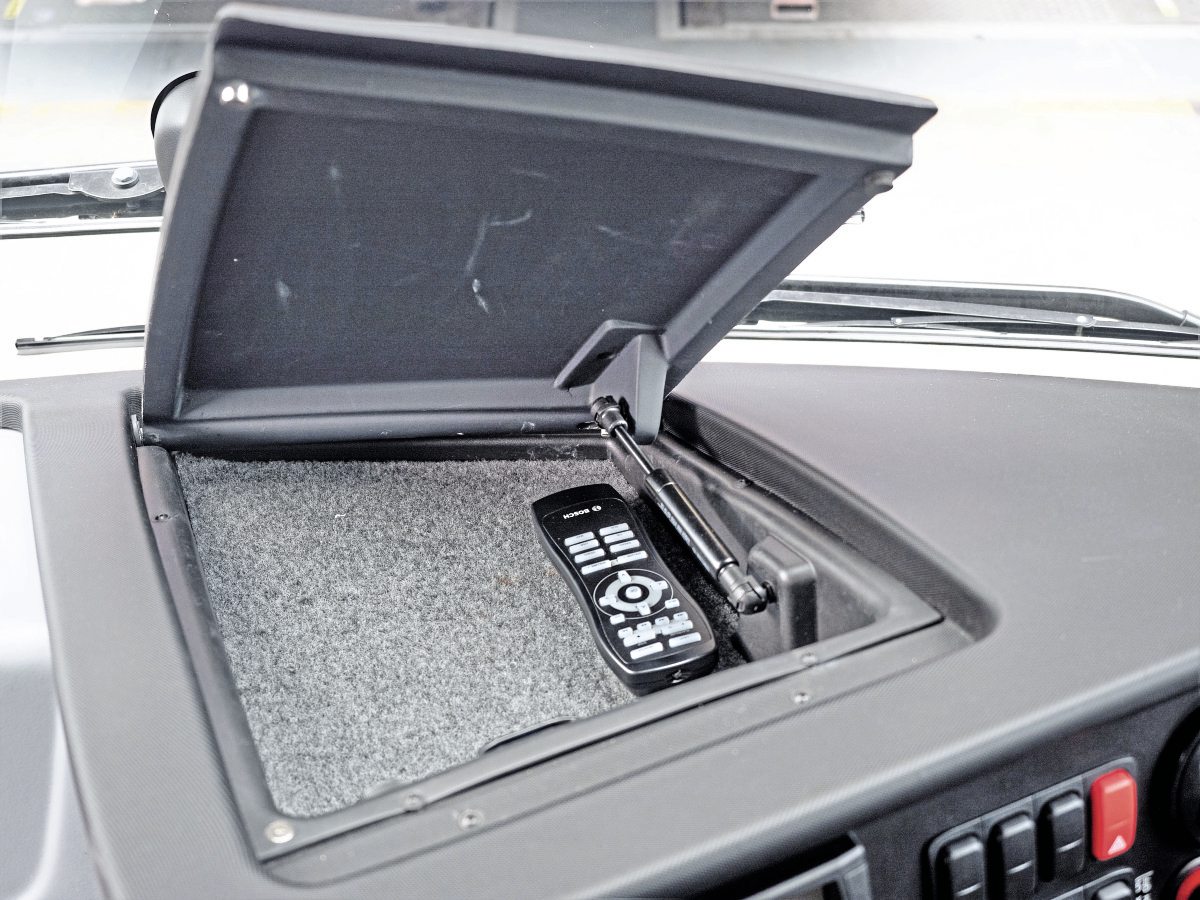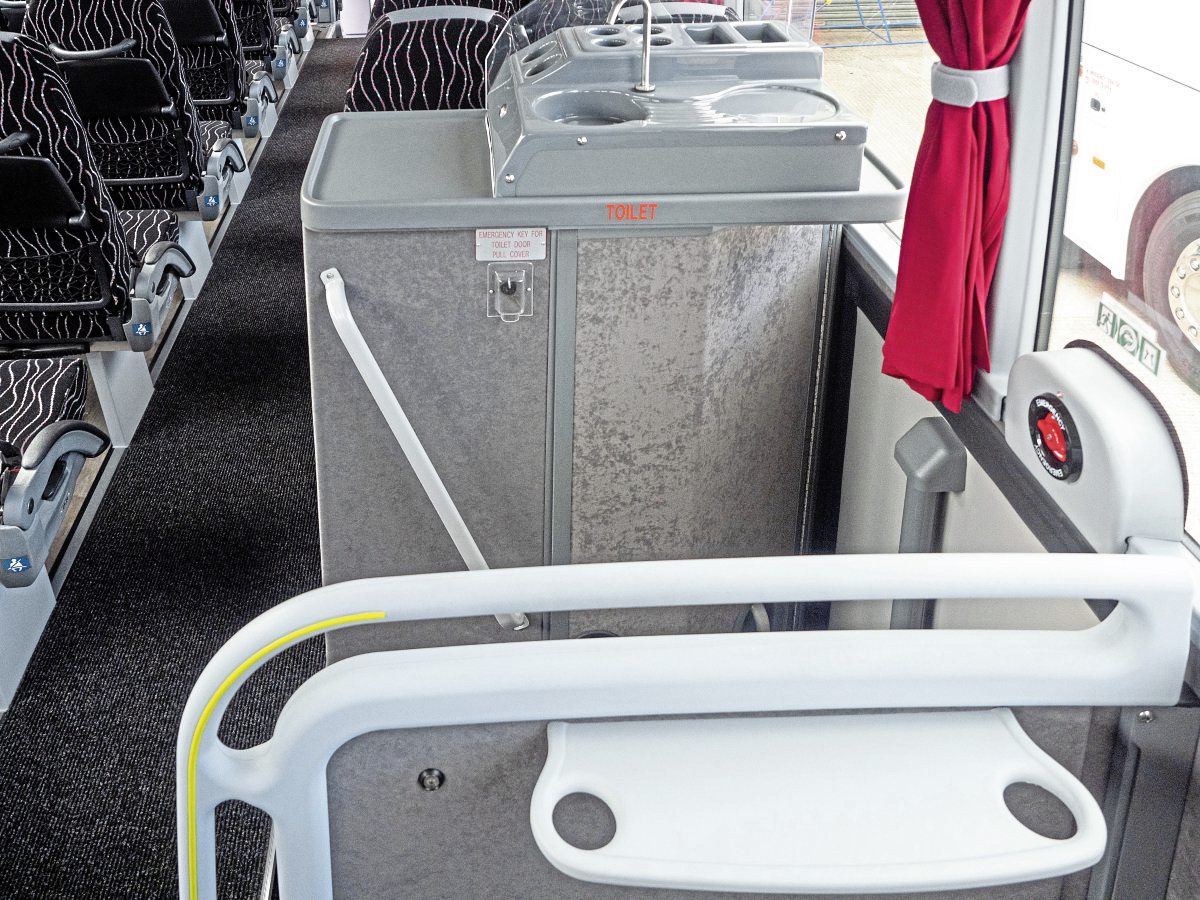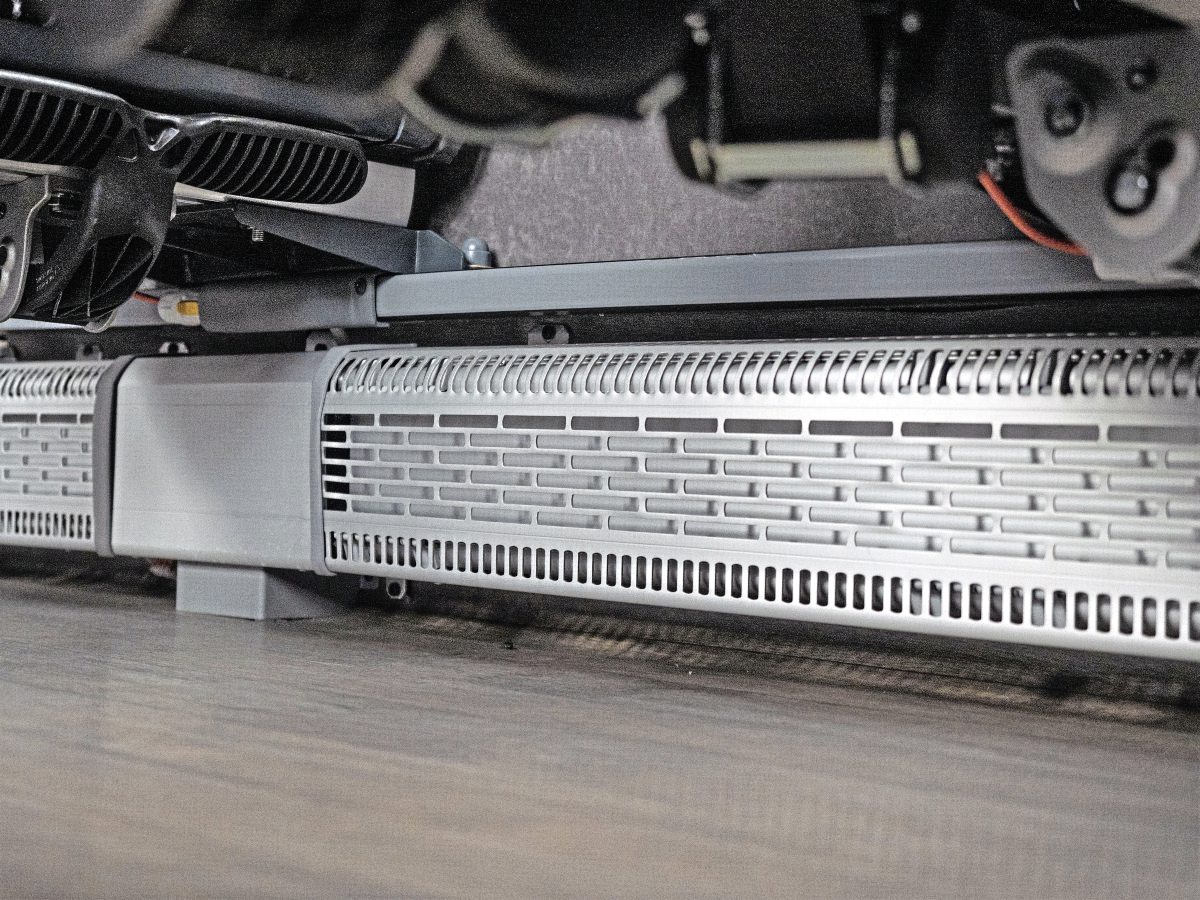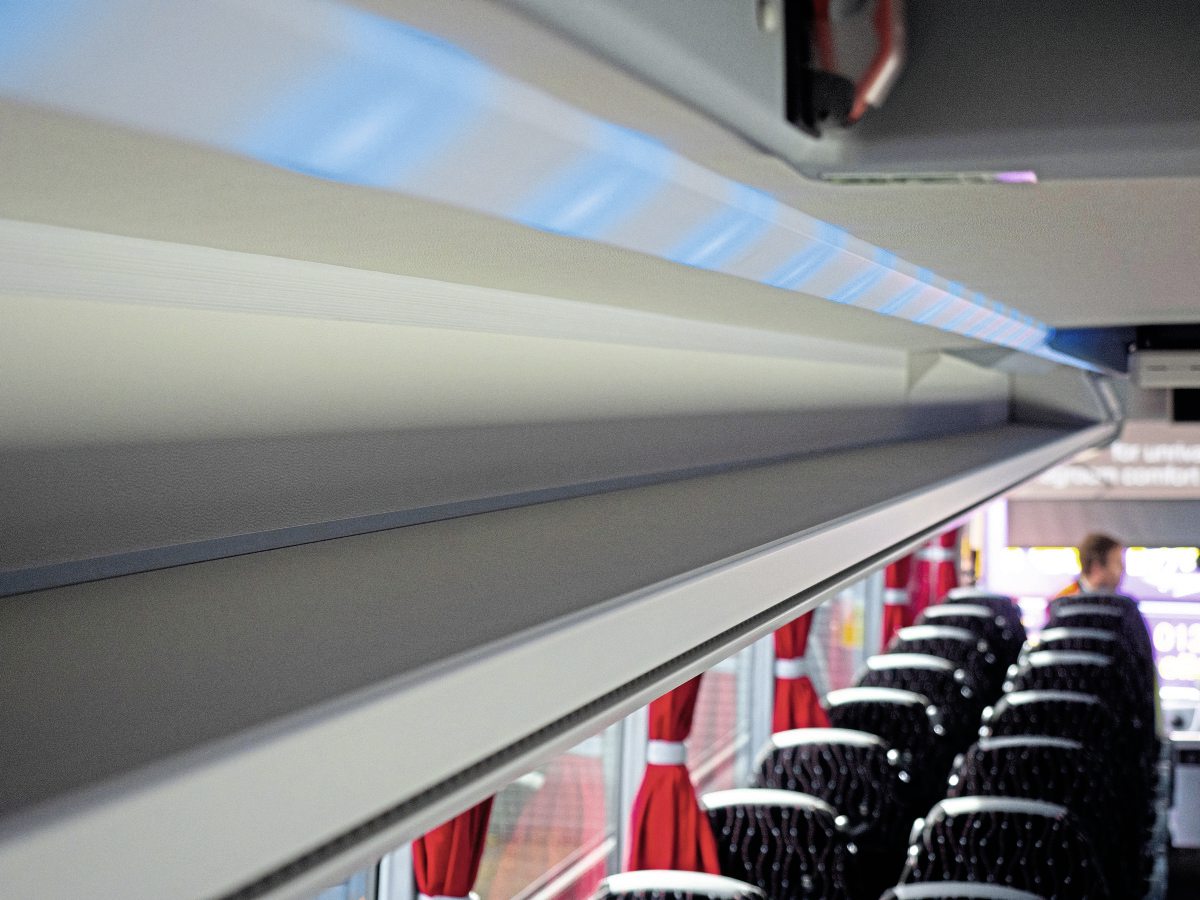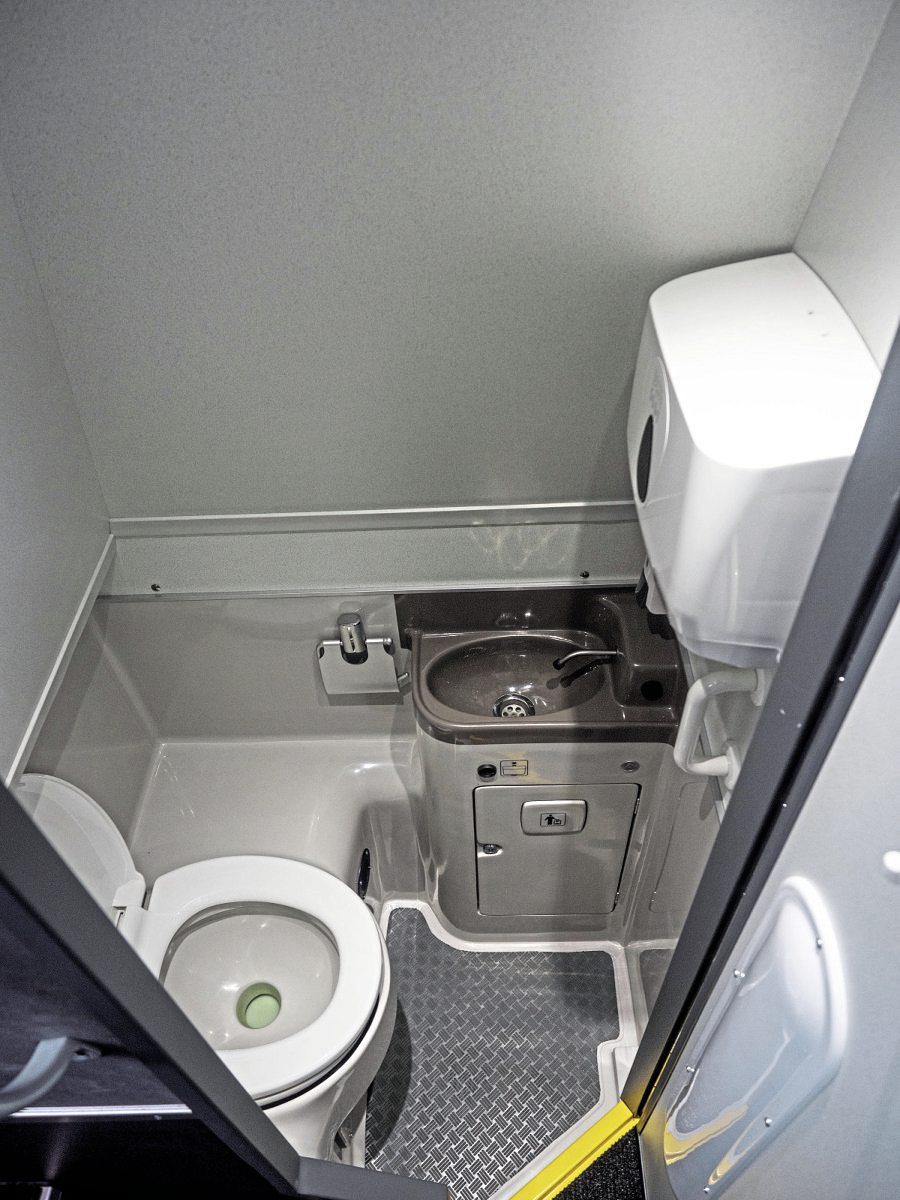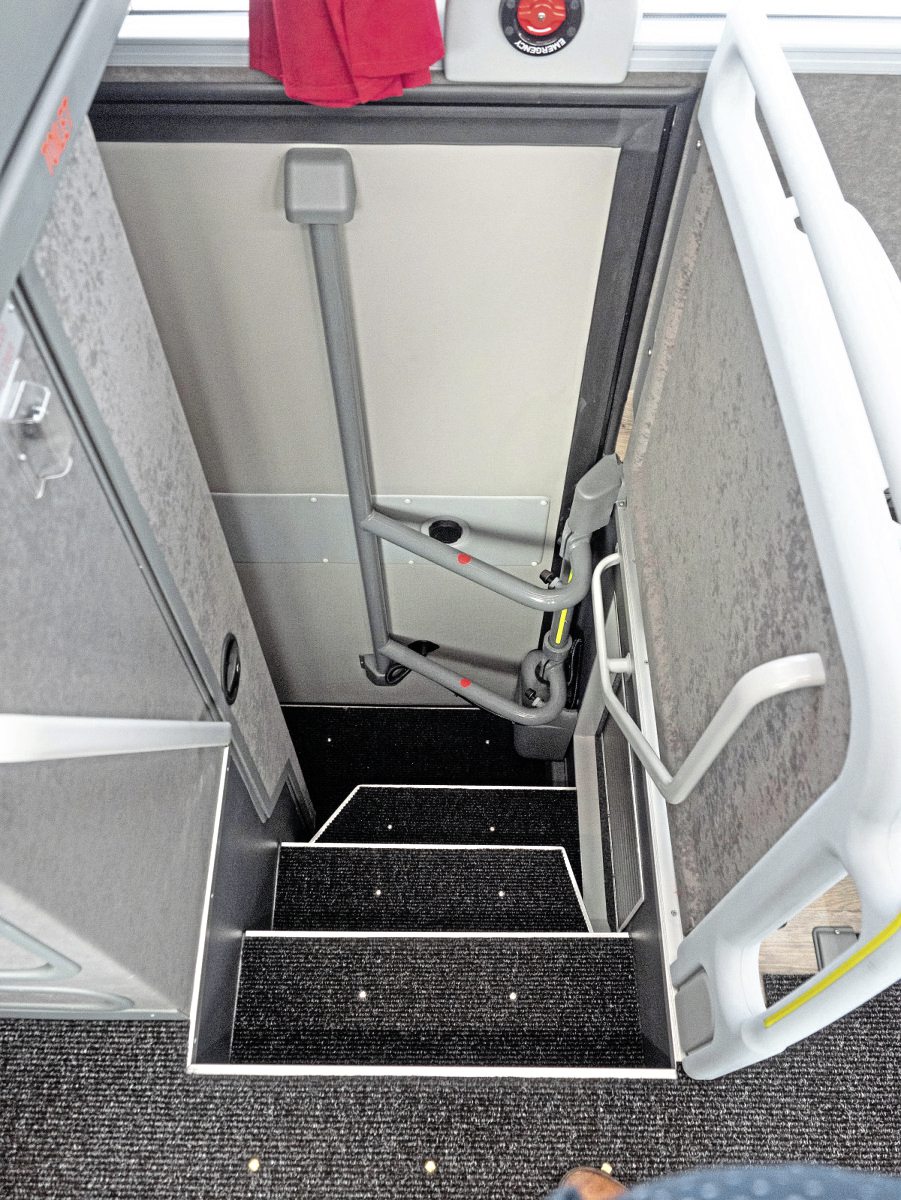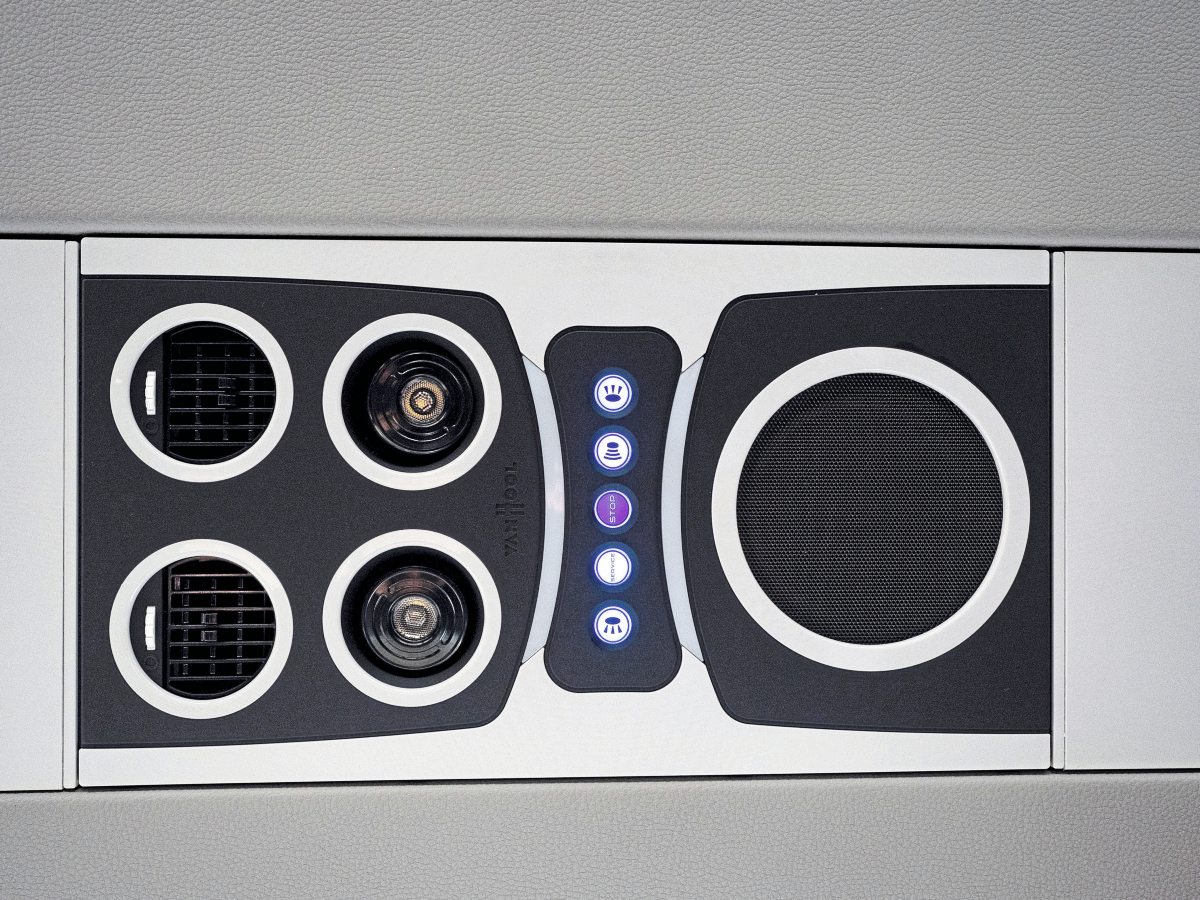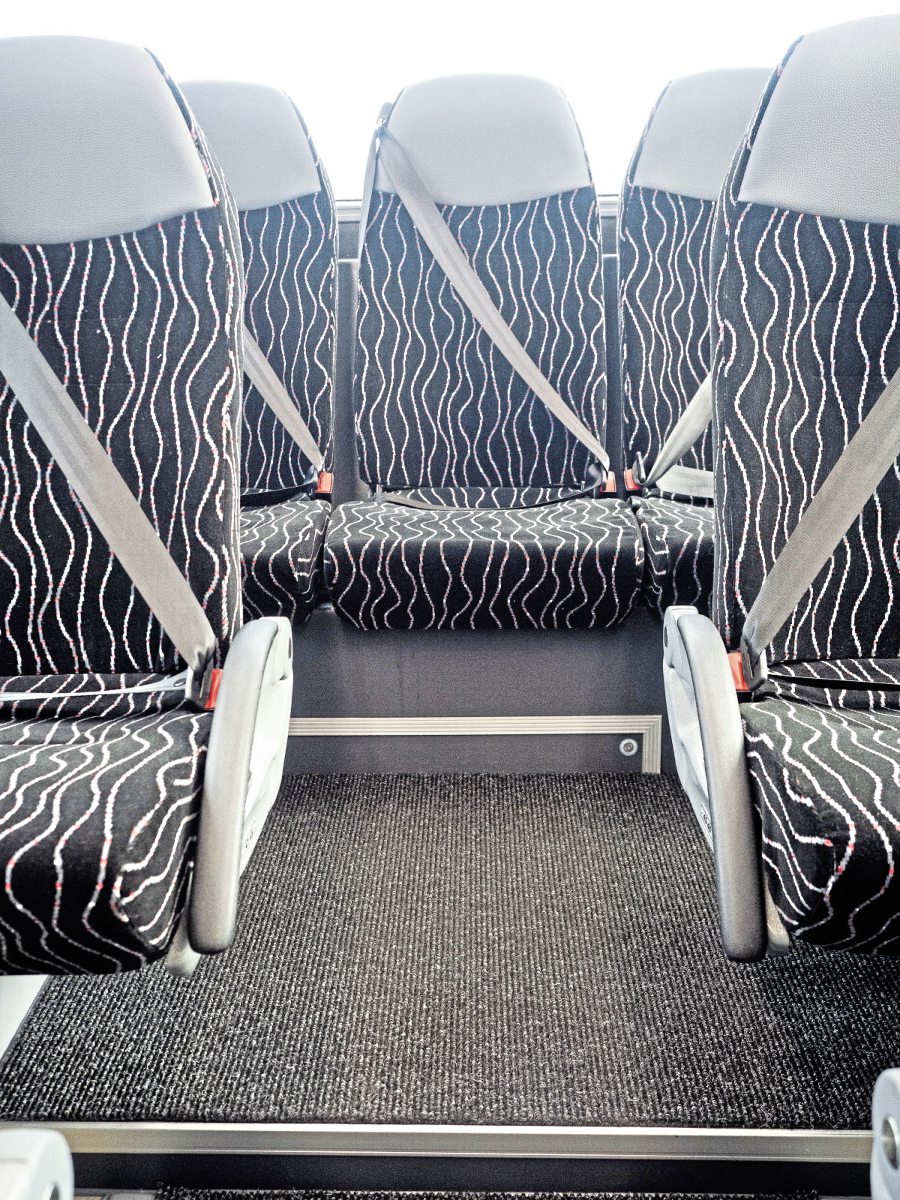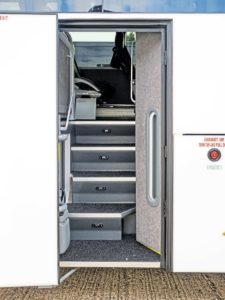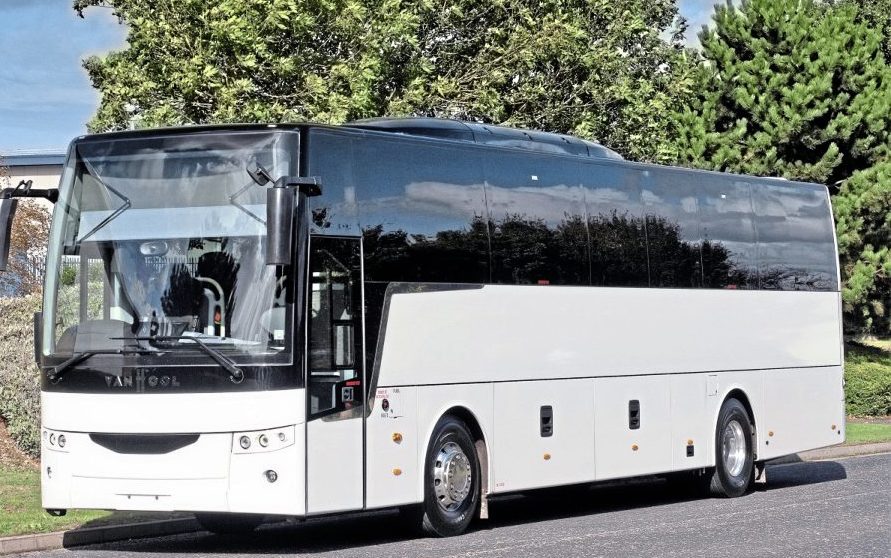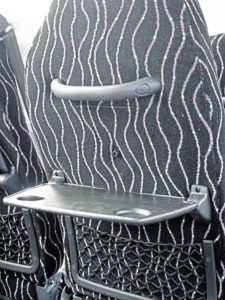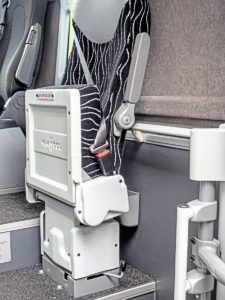The EX with new MX
Van Hool’s decision to build its two-axle coaches for the UK in Macedonia, to designs created in Belgium, has resulted in the EX range. Now, the EX gets the latest version of DAF’s MX11 engine. 13.5mpg anyone?
The importance of Van Hool’s EX series to the Belgian company cannot be understated…. and isn’t.
I was fortunate enough to catch Van Hool’s Head of Sales, Private Sector, Erik Olijslagers, at the recent NEC show, and he was keen to point out the phenomenal growth of the EX – or more accurately, the Macedonian factory – from 400 to 800 units in a year, and this from a standing start in only 2014.
Erik was unequivocal about the factory being central to Van Hool exports, with most of the output from Skopje heading for the USA, which buys the CX35 11-metre and CX45 14-metre tri-axle through ABC Companies’ six US and one Canadian outlet. The CX is, of course, substantially different to the EX, meeting American regulations and with Cummins and Detroit diesel engines.
The EX range for the UK, including the EX15M on test, are integrals driven by DAF, with ZF gearboxes including EcoLife and a TraXon option for the UK market. EX15M has been around a while, so why now for a road test? First of all, the coach has evolved a bit since launch, not least thanks to DAF Paccar’s re-engineered MX11 engine.
EX15M is a 12.48-metre, two-axle coach with its sights set on being a fleet workhorse with a bit of sophistication. We climbed aboard at Arriva Bus and Coach’s Wellingborough unit, the Coach Stig at the wheel, to find out if it fits the bill. A bill which, let’s be honest, is a lot lower than that for its tri-axle TX stablemates.
Exterior
If Van Hool is known for anything, it’s producing timeless-looking coaches which dispense with frippery and devote more effort to practicality and durability.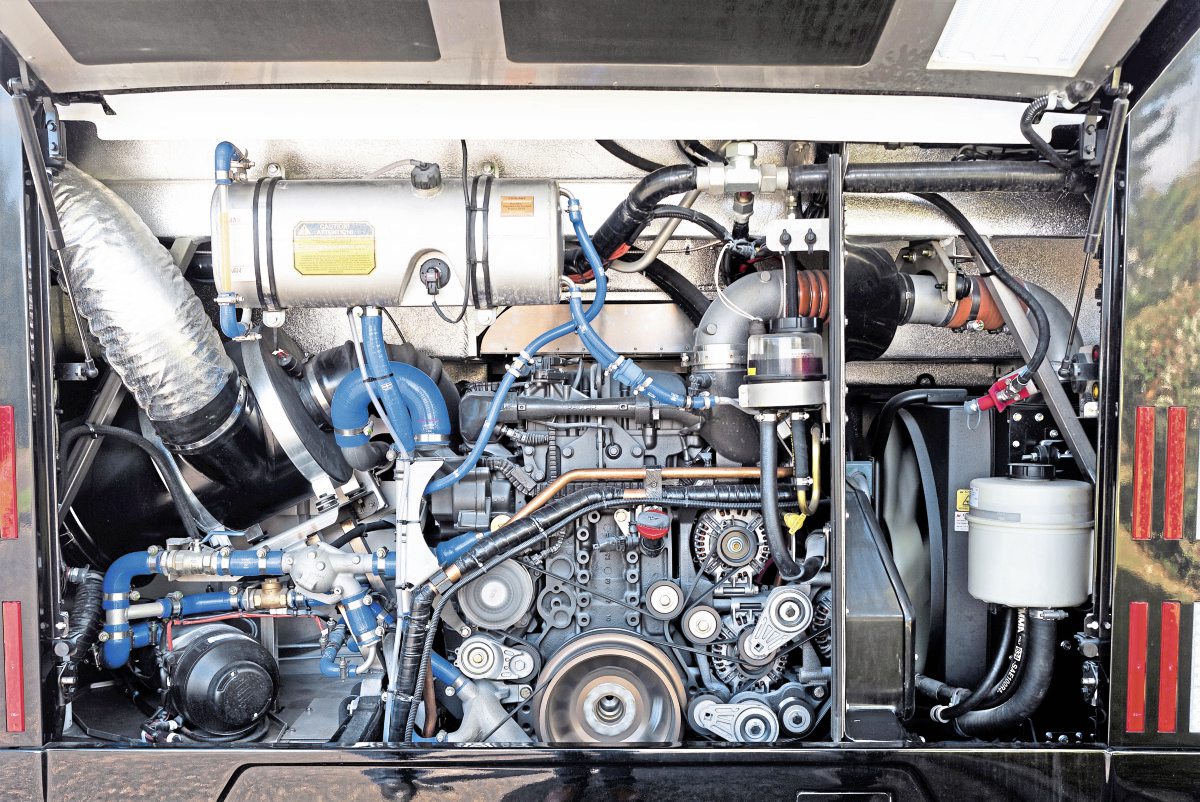 The EX, at its price point, does not set out to match the Belgian-built TX range but to provide an alternative built with the same aims. So it’s no surprise that the EX is, well, boxy. That’s not a put-down. Not at all.
The EX, at its price point, does not set out to match the Belgian-built TX range but to provide an alternative built with the same aims. So it’s no surprise that the EX is, well, boxy. That’s not a put-down. Not at all.
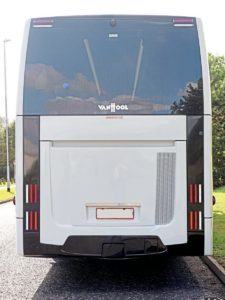 If you’re an operator looking for a blank canvas for a vinyl wrap, the EX couldn’t be more straightforward, with an almost complete absence of scalloped edges and wheelarch ‘eyebrows.’ At the front, it has a modest LED headlamp cluster set in a panel, separate lower quarters and central panels, each unfussy and functional. Van Hool allows itself a brightwork logo beneath the windscreen.
If you’re an operator looking for a blank canvas for a vinyl wrap, the EX couldn’t be more straightforward, with an almost complete absence of scalloped edges and wheelarch ‘eyebrows.’ At the front, it has a modest LED headlamp cluster set in a panel, separate lower quarters and central panels, each unfussy and functional. Van Hool allows itself a brightwork logo beneath the windscreen.
The sides of the coach are no more complex, with the only nod to fashion a Z-shaped brightwork trim on the door, swept up to the passenger window. The rear really pushes the boat out, styling-wise. The vertical light clusters are eye-catching, set in black panels. For good measure, the engine bay louvres are on the offside only, because that’s where the DAF cooling pack is sited. I understand one operator with OCD has had a fake one vinyled on to nearside to correct the imbalance.
The triumph of function over form is fully revealed when the engine bay is opened up; the DAF engine and cooling pack are separated by a rubber-sealed bulkhead, explaining the louvred panel. When I took the photograph, the engine was running but anyone ten feet away would be hard-pushed to hear it. The new MX11 is impressively quiet, and retuned for more torque at lower revs.
At 3.68m high, the coach has an impressive 10m3+ of luggage space beneath manually-operated luggage doors. There are fuel fillers both sides just behind the B pillar, and AdBlue is filled on the offside just ahead of the rear axle.
If there’s any exuberance, it’s subjective. Some coaches may be gleeful puppies, but here we have a very serious springer spaniel, ready to work. I admire that.
Interior
Passengers board through a very accommodating door via four steps to driver level, aided by an ample handrail to the left and a further handrail attached to the door pivot. Two further steps take them to aisle height.
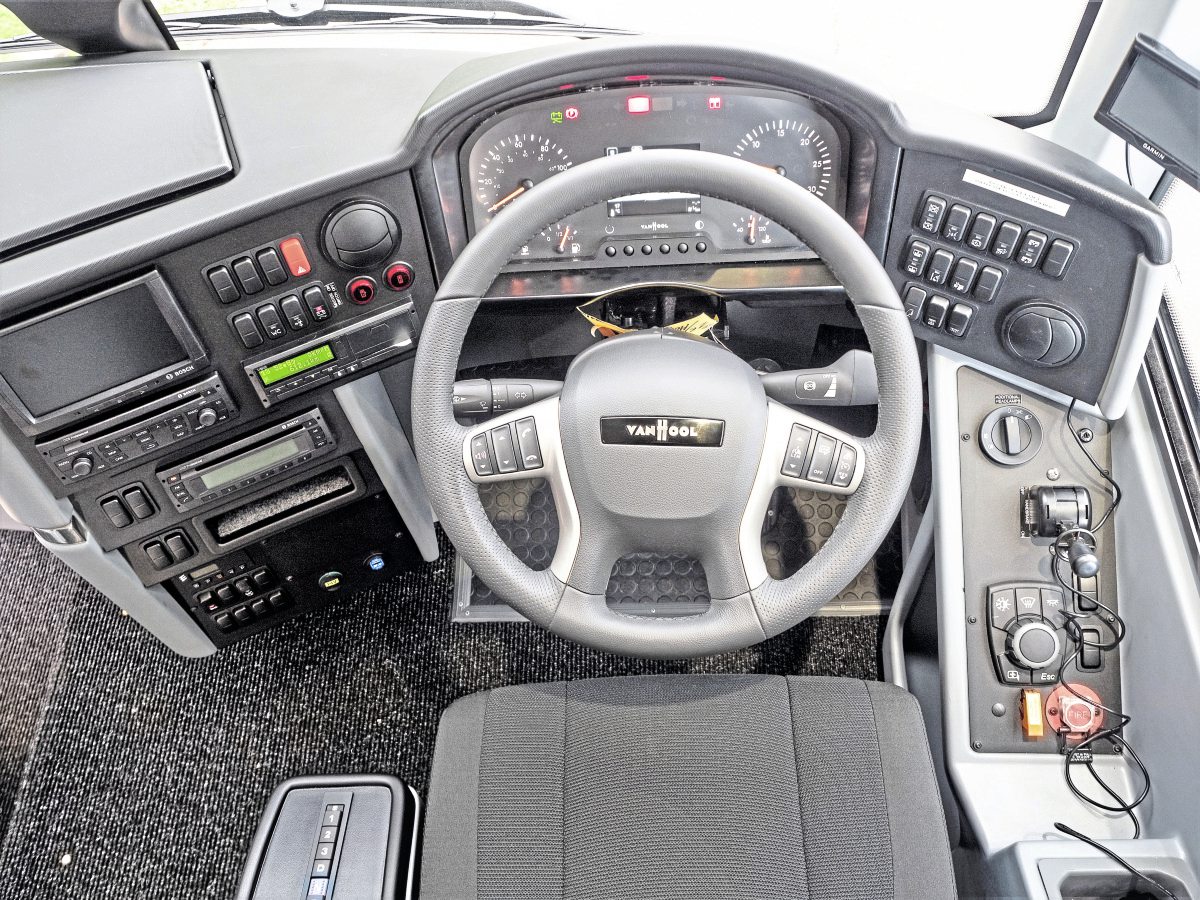
The driver cabin has logically-positioned controls, with the gearshift box on the left now moved to the right. The photo shows our drivers view of the speedometer, though some drivers may be able to adjust the steering wheel to make it fully visible.
The courier seat is stowed very neatly so customers have no obstructions or ankle hazards and a full view of the driver. The courier gets a peage window and microphone (pluggable into the B pillar or dash), plus some stowage and a dashboard fridge. The driver gets an ISRI suspended driving seat and a well-structured cabin. The gear selector buttons on a curious box to his left are gone on the production models now arriving, the buttons relocated on his right.
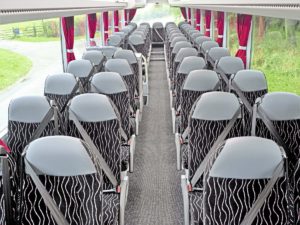 The driver is presented with a well-organised instrument panel, multi-function steering wheel controls and a central speedo/tacho binnacle with fuel gauge and temperature gauge. The Bosch media controls and tachograph are to the left, most saloon controls to the right with the handbrake and a fire suppression trigger. On production models, as mentioned, the gear selection buttons are also here.
The driver is presented with a well-organised instrument panel, multi-function steering wheel controls and a central speedo/tacho binnacle with fuel gauge and temperature gauge. The Bosch media controls and tachograph are to the left, most saloon controls to the right with the handbrake and a fire suppression trigger. On production models, as mentioned, the gear selection buttons are also here.
The driver has USB charging points, a cubby box and coat hook, with microphone on a flexible stalk.
The passenger saloon is very nicely accomplished, with ample pitch for the 53 Kiel Avance 1020 seats, with two other options available. The seats have seatback tables, magazine nets, footrests and twin USB charging sockets built into the window seat at each pair. At the front, the USBs are mounted between the seat squabs. In common with most modern coaches, LED lighting abounds.
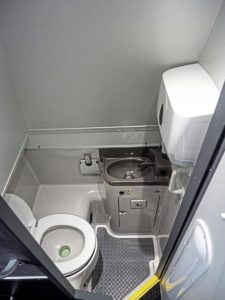 The EX has a flat floor until the rear two, then shallow steps to the rear seat row. The convector radiators are raised above the wood-effect floor, with enough gap to make cleaning possible. Luggage racks house the passenger service units, which I thought looked very robust and attractive, and the rack edges have louvres for forced air ventilation.
The EX has a flat floor until the rear two, then shallow steps to the rear seat row. The convector radiators are raised above the wood-effect floor, with enough gap to make cleaning possible. Luggage racks house the passenger service units, which I thought looked very robust and attractive, and the rack edges have louvres for forced air ventilation.
A small plea here for a pet peeve of this reviewer; the lack of dividers in the luggage rack will, inevitably, lead to passengers’ nick-nacks rolling forward to the passenger in front if there’s any heavy braking. Even the most basic plastic dividers would resolve this. The racks have two lockable lockers for the crew, however.
The positioning of the seats worked well with the window pillars generally. There’s a wipe-clean hot drinks unit with a storage locker over the toilet, itself accessed via a five-step stairwell with a good handrail on both sides. I thought the toilet itself very practical, although I thought it a bit of a squeeze through the door for an ample passenger. The stairwell here has CCTV.
The overall feel of the interior is that it’s neutral – like the bodywork, a blank canvas for the operator to embellish with branding. Personally, I wasn’t much enamoured of the seat moquette but it was easy to see past that to understand that, by making the more permanent elements neutral, they won’t dilute the style applied elsewhere.
On the road
The test driver was initially impressed with the ergonomics of the dash, which has a logic which would allow any driver to work it all out in minutes.
This is extremely important. Several coaches we have tested in recent years have hidden vital control systems within complex multifunction menus. Coaches are not cars, and while the delighted owner of a new Jag might be happy to sit in the drive inside his new car for an hour, unravelling the mysteries of its menus and sub-routines, it’s a chore for a coach driver, who may not drive the coach again for weeks, and have to repeat the exercise the next time.
So the test driver’s plea is not against multifunction displays, but for the operator to be able to fix such aspects as, perhaps, economy mode as a default, and keep the essentials permanently on top of the menu when the coach is switched on. Does a driver really need to be able to tunnel down into a diagnostics layer? Maybe, but this information should be buried deep in the system to avoid it being a distraction. Any driver should be able to hop into the seat and immediately have control.
In this respect, the EX scores well. However, the test driver (who it must be said is a little vertically challenged) found it impossible to adjust the seat and steering wheel in such a way that he could see the 10mph to 50mph range of the speedo and still be comfortable. Similarly, the A pillar obscured part of the mirror and the edge of the peage window, when open, obscured the waist-level mirror.
It was also noted that the view main mirror does not sit wholly within the swept area of the windscreen wipers. I feel bound to say that some drivers may not feel these major issues or may simply have a height and posture which resolves the problems our test driver had. Take a look and see what you think.
There’s a bit of me which thinks the wider introduction of camera mirrors, already being fitted to
buses, will make life much simpler for coach designers and, with mirrors costing the thick end of £1,000, cheaper for operators. The EX already comes with a good reversing camera.
Leaving the kerb, the EX driveline picks up very smartly indeed the moment the brake is released. The MX11/ZF EcoLife gearbox combination has matured very well, making the coach a brisk performer with imperceptible gearchanges. The coach exhibited excellent, neutral handling in every department, with good feedback from the steering.
At one stage on our test route, we decided to turn back, and it was then that the EX also revealed itself to be a nifty, manoeuvrable coach: “The turning circle is very good indeed,” remarked our test driver. Despite our misgivings about mirror position, the view in them is very good, and made the manoeuvre simple.The test driver also loved the steering, which was light and responsive, with good feedback.
From the passenger perspective, the EX is as good as any touring coach available. Noise is well under control throughout the saloon, even at the offside door position which often reveals additional road noise. Part of the reason is the MX11 engine which, as we said earlier, is a very smooth operator. There were no rattles or squeaks evident, testament to the performance of the factory.
Verdict
The EX15M is a very accomplished coach which justifies the Van Hool name, not least because it reflects the ethos of function over form.
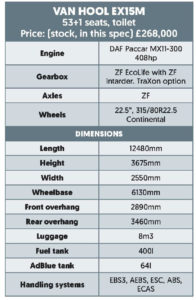
No amount of styling compensates for achieving a quality finish which promises durability. Yes, the EX15M exterior has neutrality verging on blandness, but that’s no bad thing. I’m always disappointed that so many of our test vehicles are in Dealer White (though I understand why they are) because I very strongly suspect that when this coach is painted in a bright, modern colour, it’s going to look very impressive indeed, with a bit of poise rather than pose.
The structure is bonded stainless, the stretch panels galvanised and the locker doors aluminium. Damage-prone lower panels are GRP, and of excellent quality.
The driveline is a familiar and popular one, but the new MX11 engine does enhance it further. On the limiter, the tachometer shows 1,150rpm, which promises consistent economy. Indeed, Arriva Bus and Coach’s Head of Product, Steve Fletcher, topped the tank up on departure, and refilled after our return from about two hours on the road. 13.5mpg, he says. What you achieve will depend heavily on your duty cycle and driver, but Steve’s figure impresses.
Our niggles about mirror position aside, we liked the EX15M. At around £268,000 retail, it’s mid-priced and a challenger in this sector. If you want peace of mind, Arriva Bus and Coach offers not only the manufacturer warranty of two years, but maintenance packages which are proving very popular, whether you are close to the Cleckheaton HQ or the Wellingborough service centre just 90 minutes from the M25.
